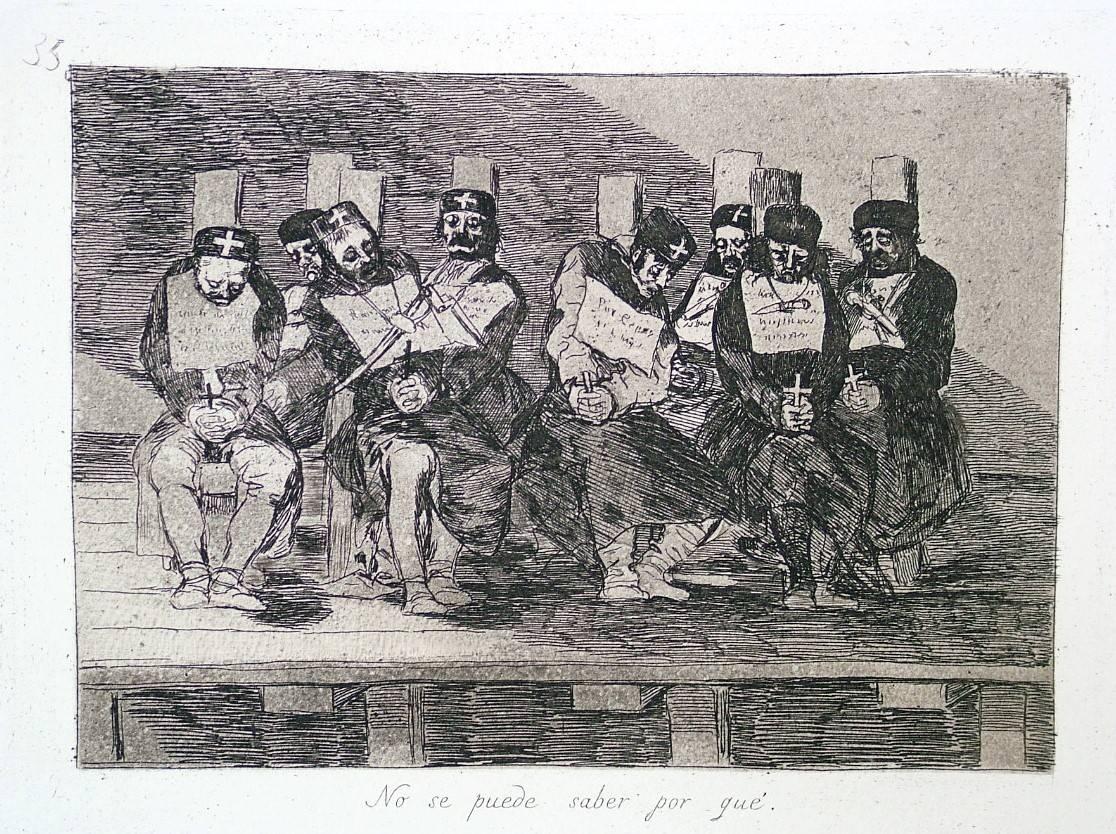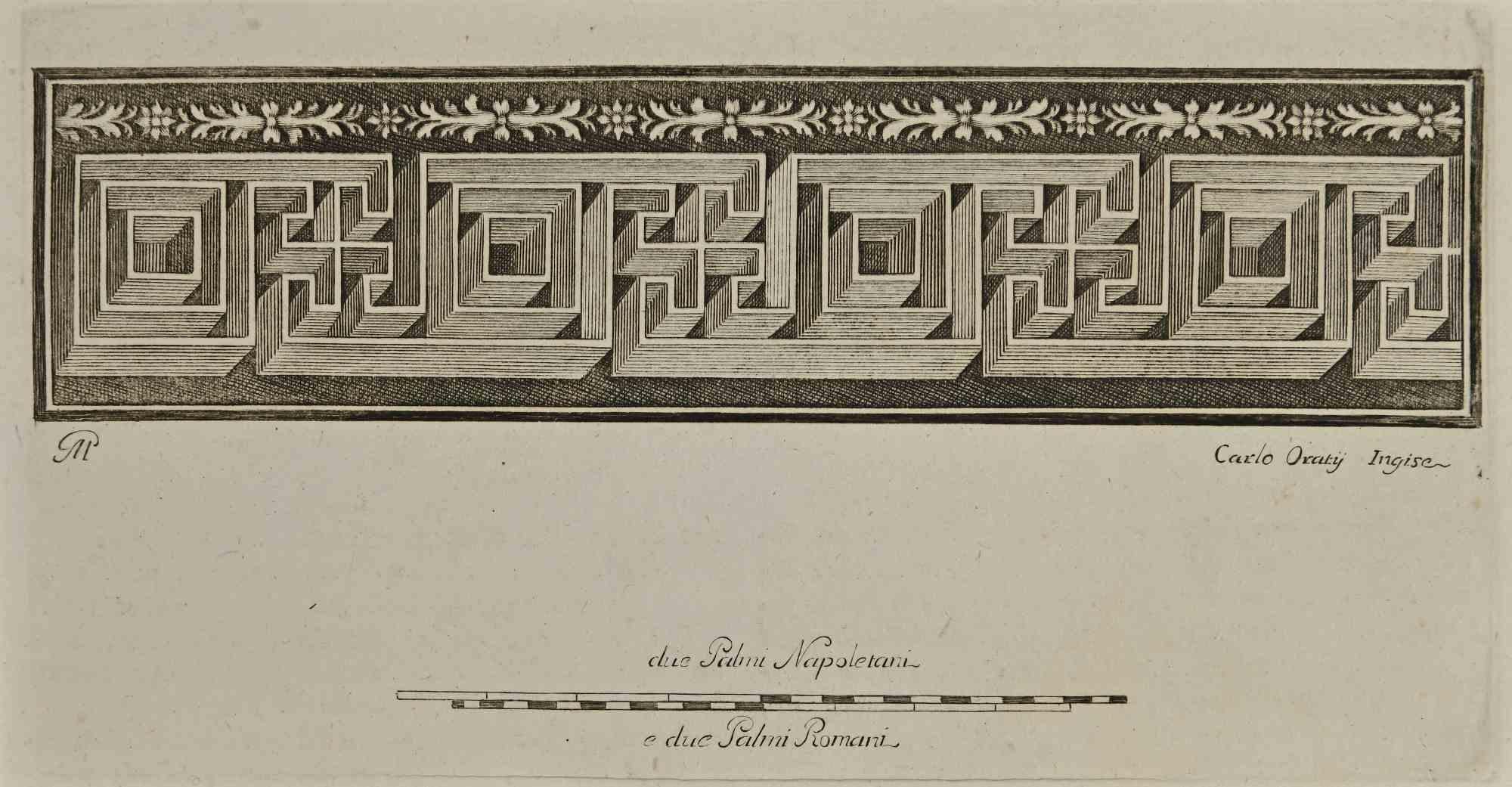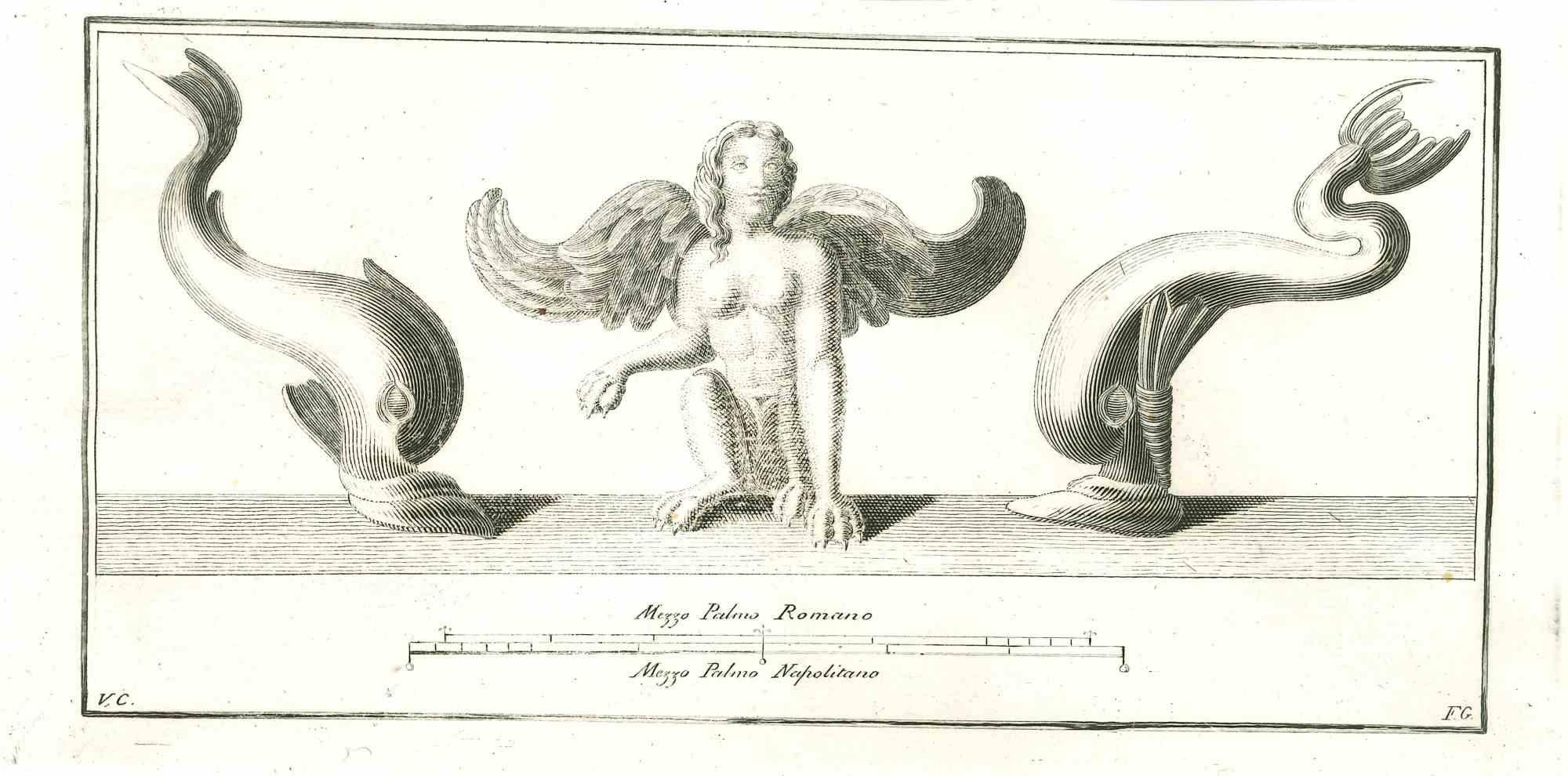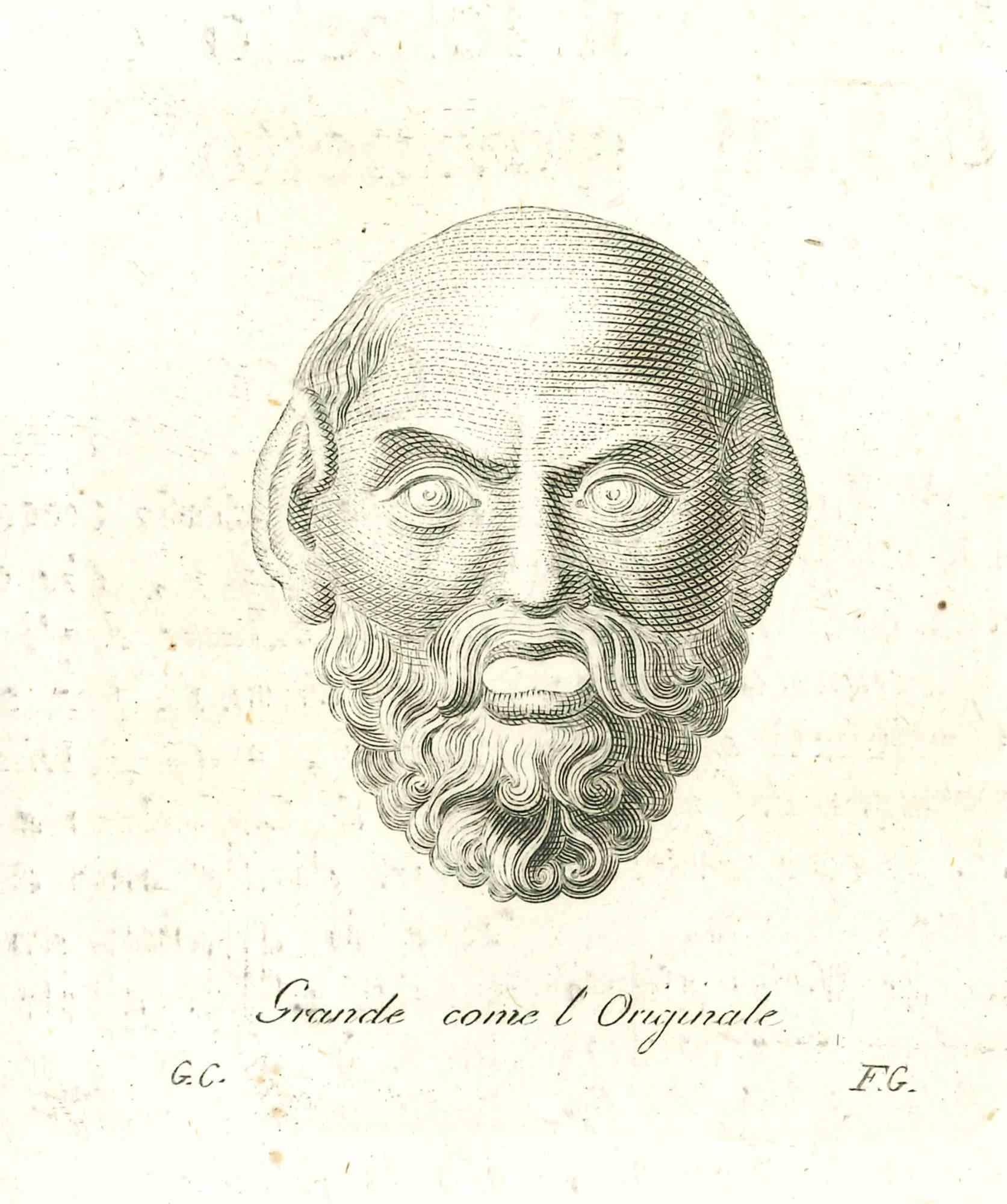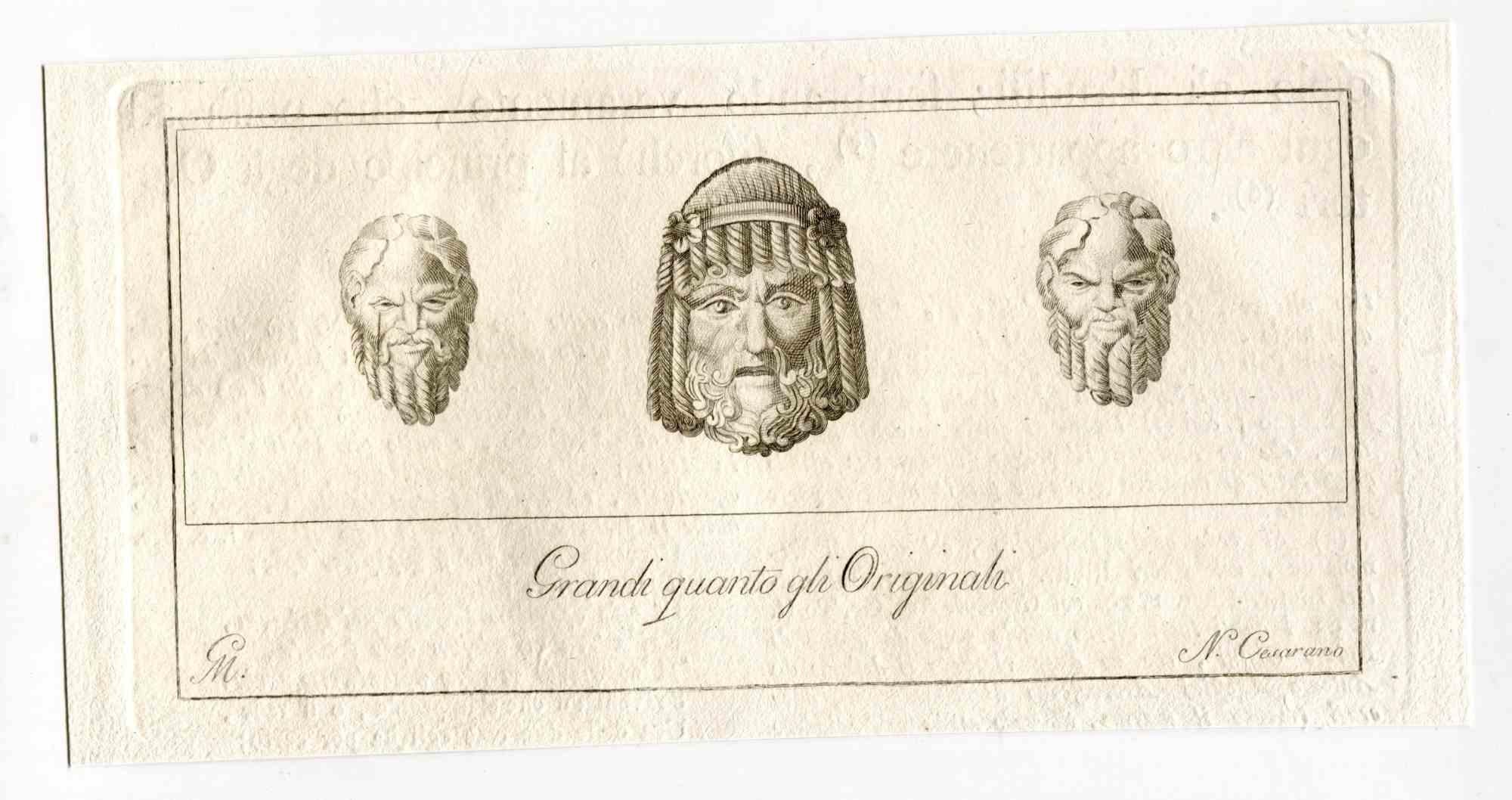Items Similar to Que se la Llevaron! - Etching by Francisco Goya - 1799
Want more images or videos?
Request additional images or videos from the seller
1 of 2
Francisco GoyaQue se la Llevaron! - Etching by Francisco Goya - 17991799
1799
About the Item
Que se la Llevaron! is an original etching realized by Francisco Goya in 1799, from Los Caprichos series.
The artwork is the plate 8 (as printed on plate on the higher right margin) from the series Los Caprichos, first edition.
Good conditions.
Los Caprichos.
Put on sale the 6 February 1799, at the end of the last carnival of the century, Los Caprichos, first Goya’s printed cycle created as a unit, can be located in a period of transition in the artist’s life. Actually, in the last decade of the eighteenth century, there were some facts very important for Goya, as the illness and the hearing loss.
These engravings are made in 1797 in Madrid, after the artist’s stay in Andalusia, where he was guest of the Duchess of Alba.
In 1797 Gaspar Melchor de Jovellanos, the most important deputy of the spanish Age of Enlightenment and Goya’s protector, accepted the Ministry of Mercy and Justice and started to promote a splendid environment for the artistic expression. The same year, the first version of this set (72 engravings) was printed entitled as Sueño 1º Idioma Universal. In january of 1799, the definitive edition (80 engravings) of the Caprichos was published.
This cycle can be divided into two parts, each of these is introduced by a self-portrait of the artist.
In the first self-portrait, that anticipates 41 realistic scenes (2-42), Goya represents himself as a middle-class man who has a sarcastic vision of the world, the main subject of his Caprichos. In the second portrait, he images himself asleep amidst his drawing tools, with monsters behind him produced by the reason dulled.
The Caprichos are a strong aesthetic and social provocation; french poet Baudelaire said about Goya’s masterpiece: “ No one artist more than Goya dared the sense of the absurd possible. All these contortions, these bestial faces, these diabolic sneers are infused with humanity […] it’s impossible find the suture, the point of union between real and fantastic; it’s a line so unclear that also the finest analyst can’t draw, in an art that is, at the same time, so transcendent and natural”.
Francisco José de Goya y Lucientes (March 30th 1746 - Bordeaux, April 16th 1828), Francisco Goya, the Spanish painter and printer, was one of the rare artists that, through their work, not only gain the recognition and admiration of their contemporaries, but influence the development of future art.
Born in Fuentedetodos to a middle-class family originating from Aragona, he was the forth of six brothers.
Studying with José Buzàn y Martinez, and in Madrid under Velasquez, and entered the group of R. Mengs where he met Tiepolo. After going to Roma and Venice, he returned to Spain to paint the dome of Santa Maria of Pilar basilica in Zaragoza with frescoes showing Tiepolo's influence. In Madrid he was uncomfortable with his academic style, despite the fame gained in the king's court for his very lively style and refined artistic taste. He had started his most productive and busy period of his life. He returned to Zaragoza to paint frescoes in the cathedral (commissioned by Bayeu) but left the work incomplete and instead started to paint portraits and also started “Caprichos”.
Goya's main success was under the reign of Carlo IV but when the power of Ferdinandi VII increased under the French occupation, he went into exile in Bordeaux. In 1799 he painted the family portrait of Carlo IV and attracted the friendship of the king. Goya was close to the poor, something that is reflected in the “Desastres de la guerra” print, and to which he dedicated his work during his stay in France. Goya travelled to Zaragoza to paint the companies of the Spanish resistance, but left Spain for Bordeaux after the onset of deafness and painted the Milkmaid of Bordeaux. He died in Bordeaux in 1828.
- Creator:Francisco Goya (1746 - 1928, Spanish)
- Creation Year:1799
- Dimensions:Height: 8.47 in (21.5 cm)Width: 5.99 in (15.2 cm)Depth: 0.08 in (2 mm)
- Medium:
- Movement & Style:
- Period:1790-1799
- Framing:Framing Options Available
- Condition:Insurance may be requested by customers as additional service, contact us for more information.
- Gallery Location:Roma, IT
- Reference Number:
Francisco Goya
Francisco José de Goya y Lucientes (1746-1828) was a Spanish romantic painter and printmaker. He is considered the most important Spanish artist of the late 18th and early 19th centuries. His works often contained a social message, like in his "Disasters of War" series. Immensely successful in his lifetime, Goya is often referred to as both the last of the Old Masters and the first of the moderns. He was also one of the great portraitists of his time.
About the Seller
4.9
Platinum Seller
These expertly vetted sellers are 1stDibs' most experienced sellers and are rated highest by our customers.
1stDibs seller since 2017
6,768 sales on 1stDibs
Typical response time: 3 hours
- ShippingRetrieving quote...Ships From: Rome, Italy
- Return PolicyA return for this item may be initiated within 14 days of delivery.
More From This SellerView All
- Genesis 1 - Old Testament Story - Etching by Giovanni Lanfranco - 1607Located in Roma, ITGenesis 1 -Old Testament Story is an Etching print realized by the artist Giovanni Lanfranco. About The Old Testament Story, 1607 ca. Passpartout ...Category
Early 1600s Old Masters Figurative Prints
MaterialsEtching
- Ancient Roman Fresco Herculaneum - Etching by Carlo Oratij - 18th CenturyLocated in Roma, ITAncient Roman Fresco from the series "Antiquities of Herculaneum", is an etching on paper realized by Carlo Oratij in the 18th Century. Signed on the plate. Good conditions. The e...Category
Late 18th Century Old Masters Figurative Prints
MaterialsEtching
- Antiquities of Herculaneum Exposed- Original Etching - 18th CenturyLocated in Roma, ITAntiquities of Herculaneum Exposed, original etching from the end of the 18th century, made by Various Old Masters. Good condition...Category
Late 18th Century Old Masters Figurative Prints
MaterialsEtching
- Ancient Roman Relief - Original Etching - 18th CenturyLocated in Roma, ITAncient Roman Relief, from the series "Antiquities of Herculaneum", is an original etching on paper realized by an anonymous Artista in the 18th century. ...Category
Late 18th Century Old Masters Figurative Prints
MaterialsEtching
- Ancient Roman Fresco - Original Etching - 18th CenturyLocated in Roma, ITAncient Roman Fresco from the series "Antiquities of Herculaneum", is an original etching on paper realized by an anonymous in the 18th Century. Signed ...Category
18th Century Old Masters Figurative Prints
MaterialsEtching
- Ancient Roman Statue - Original Etching by Vincenzo Campana - 18th CenturyBy Vincenzo CampanaLocated in Roma, ITAncient Roman Statue, from the series "Antiquities of Herculaneum", is an original etching on paper realized by Vincenzo Campana in the 18th Century. Signed on the plate on the low...Category
Late 18th Century Old Masters Figurative Prints
MaterialsEtching
You May Also Like
- One Can't Tell Why - Proof from the Disasters of WarBy Francisco GoyaLocated in New York, NYFrancisco José de Goya y Lucientes (1746 Fuendetodos – Bordeaux 1828), No se puede saber por qué – One can’t tell why ca. 1808–1814, etching, burnished aquatint, drypoint, an...Category
1810s Old Masters Figurative Prints
MaterialsDrypoint, Etching, Aquatint
- Fabricius (Ponte Cestio) Bridge : Framed 18th C. Piranesi Architectural EtchingBy Giovanni Battista PiranesiLocated in Alamo, CAThis framed 18th century etching by Giovanni Battista Piranesi is entitled "Dimostransi nella Tav. presente la Pianta, ed Elevazione del Ponte, oggi detto Quattro Capi egli è antichissimo, e chiamavasi Fabrizio da L. Fabrizio Presid. delle Strade, che lo fabbrico' nel fine della Repubblica. "(The Plan and Elevation of the Bridge, today called Quattro Capi. The architect is very ancient, and was called Fabrizio da L. Fabrizio Presid. delle Strade, who built it at the end of the Republic). This is plate 18 in volume 4 of Piranesi's "Le antichita romane opera di Giambatista Piranesi architetto veneziano" (Roman antiquities by Giambatista Piranesi Venetian architect). It was published in Rome in 1756-1757. This etching depicts the plan and elevation of the bridge now called the Ponte dei Quattoro Capi or Ponte Cestio (Bridge of the Four Heads), which in antiquity was called the Bridge of Fabricius after L. Fabricius, the Superintendant of the Streets who built it at the end of the Republic, around 62 BC. It was also been known in the Middle Ages as ‘Ponte Giudeo’ (Bridge of the Jews). The bridge crossed from the left bank or northeast side of the Tiber River to Tiber Island...Category
1750s Old Masters Landscape Prints
MaterialsEtching
- Ancient Roman Marble Vase: 18th C. Piranesi Etching Vaso Cinerario di Gran MoleBy Giovanni Battista PiranesiLocated in Alamo, CA"Vaso Cinerario di Gran Mole. Le Teste dei Giovenchi mostrano di reggere it pesante Festone composto di Frutti Fiori Grans ed use. Il tuto Necefsario all Vita Umana. Il Restante degl...Category
1760s Old Masters Figurative Prints
MaterialsEtching
- Piquier Allemand (German Pikeman) /// Old Masters Figurative Man Soldier AntiqueLocated in Saint Augustine, FLArtist: Armand Joseph Lallemand (French, 1810-1871) Title: "Piquier Allemand (German Pikeman)" Portfolio: Gazette des Beaux-Arts Year: 1866 Medium: Original Etching on cream laid pap...Category
1860s Old Masters Figurative Prints
MaterialsIntaglio, Etching, Laid Paper
- The New Testament /// Old Masters Biblical Religious Engraving Dutch Angel ArtBy Michael BurghersLocated in Saint Augustine, FLArtist: Michael Burghers (Dutch, c.1647/1648-1727) Title: "The New Testament" Portfolio: Holy Bible *Signed by Burghers in the plate (printed signature) lower left Year: 1680 Medium: Original Etching and Engraving with recent Hand-Color on watermarked laid paper Limited edition: Unknown Printer: John Baskett, London?, UK Publisher: Moses Pitt, Peter Parker, and Thomas Guy, London?, UK Sheet size (irregular margins): 17.25" x 10.5" Image size: 14.75" x 9.5" Condition: Uneven trimming and light edgewear in margins. One small tear entering image lower right which has been skillfully repaired with added backing paper with archival tape from verso. It is otherwise a strong impression in very good condition with strong colors Very rare Notes: Provenance: private collection - Cotswolds, UK. Comes from the 1685 "Holy Bible" portfolio. John Baskett was deemed printer to the King's most Excellent Majesty, for Great Britain and to the University of Oxford. Large unidentified watermark within center of sheet. There is an example of this work in the permanent collection of the British Museum in London, UK. In the foreground, John the Evangelist, holding a pen and writing...Category
1680s Old Masters Figurative Prints
MaterialsWatercolor, Engraving, Etching, Laid Paper, Intaglio
- Jan Uytenbogaert, The GoldweigherBy Rembrandt van RijnLocated in Boston, MABartsch 281, Hind 167 iii/III, Nowell-Usticke 281, iii/III. A fine impression, with burr, as retouched by Baillie in 1792. With an unidentified collectors stamp, verso.Category
17th Century Old Masters Figurative Prints
MaterialsDrypoint, Etching
Recently Viewed
View AllMore Ways To Browse
Antique Old Tools
Old Tools Antique Tools
Old Antique Tools Tools
Old Antique Tools
Old Antique Tool
Antique And Old Tools
Old Masters For Sale
Antique Se
After Goya
Set Of 6 Etchings
16th Century Style Portrait
Francisco De Goya
Original Etching 16th Century
Old Master Drawing 16th
Antique Drawing Tools
Antique Cycling Prints
Antique Engraving Tools
R T Facts
